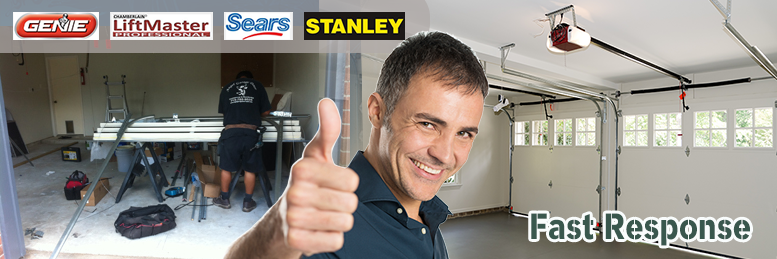813-775-7199 813-775-7199
Garage Door Springs
Back To Our Services
Springs made for garage doors are coiled, often oil-tempered and manufactured to last for a very specific period of time. The lifespan of most residential springs is estimated to 10,000 cycles with each cycle involving the full opening/closing movement of the door. Garage door springs vary as to their size and must be measured to match the door's weight. If springs are weaker than the door's weight, they will break soon and won't be able lift the door. For this reason, garage door replacement should always involve spring replacement as well, especially if the new door is heavier.
Torsion spring system
Most residential doors use one torsion spring unless they are extremely heavy in which case they will have two springs and will share the same bearing since they will be fastened to the same center anchor bracket so that they will be centered. There is a metal tube called shaft which passes through the spring and is attached to the two ends with bearing plates. The cable drums are installed at the two corners of the shaft. The spring has a stationary cone at one end which is secured to an anchor bracket fastened on the wall and doesn't move. At the other end there is a winding cone which is used to adjust and install the spring. This is the part, which unwinds and winds to move the door up and down. The spring creates torque as it stretches on the shaft and then torque is passed through the shaft and drums to the cables.
Extension spring system
Extension springs are found in most residential doors. For average size doors, one pair of extension garage door springs is enough. These types of springs are installed parallel and above the horizontal tracks and one in each side of the door. Their ends might have a clip, an open or close loop. One end is attached to a pulley fork, which is fastened to a pulley. Cables are part of the spring system. One cable end goes over this pulley and is attached to the track with an s-hook. The other cable end goes over a second pulley and all the way down to the bottom bracket, where it is attached. The second end of the extension spring is fastened to the track or garage frame. Some extension springs use safety cables running through them for safety reasons.
Garage door spring replacement in Greater Northdale
Once the estimated lifespan has passed, the springs must be replaced or they will break. You will know they are broken if the door won't be lifted. Whether you have one or two pairs of extension springs installed, they must all be replaced even if only one breaks. If you don't change them all, the new one will wear much faster. The professionals at Garage Door Repair Greater Northdale advise you to replace springs before they break because they can cause serious injuries if they snap when you are in the garage. If the door is open and the springs break, it will collapse. Our technicians replace all types of springs, offer broken spring replacement, are here to make adjustments and can answer any of your questions.
Give us a call anytime.
View Garage Door Repair Greater Northdale in a larger map


